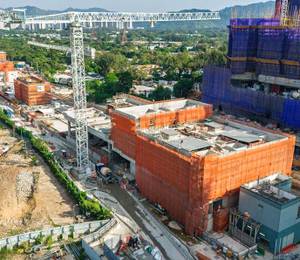The government of Nepal has set an ambitious target to reach 5 GW total hydropower capacity over the next five years. With limited conventional energy resources, this effort would be key to ensuring that 100% of the population (up from the current 70%) has access to reliable electricity.
Leveraging its global expertise in dams and hydropower projects, SMEC has been appointed by the Department of Electricity Development to undertake the feasibility study and environmental impact assessment (EIA) for the 844-MW Kaligandaki Hydropower Project in Nepal. Located along the border between Parbat and Myagdi, this multipurpose storage hydropower project will utilise river discharge flowing into the Kaligandaki River.
According to SMEC, the planned location of the proposed project is 1- to 2-km upstream from the confluence of Kaligandaki and Seti Rivers, with elevation of around 530 m and inundation up to around 750 m. The reservoir volume has been calculated to approximately 2,043 cu mm.
This new appointment follows SMEC’s assignment in late 2019 for the proposed 70.34-MW Simbuwa Khola Hydroelectric Project in the Taplejung district of Nepal by Remit Hydro Ltd, utilising the flow of Simbuwa Khola, a tributary of Arun River. SMEC’s services include updating the feasibility study, detailed engineering surveys and design and preparation of tender documents. The project aims to generate 378.96 GWh of electricity annually, which will be evacuated through the Koshi Corridor Transmission Line.
“With rising demand for power, Nepal’s economic wellbeing depends heavily on hydropower development,” said Kamalesh Pradhananga, team leader for the Kaligandaki Storage Hydropower Project. “SMEC has a long track record of delivering hydropower projects in remote, complex environments, and we’re able to tap that experience combined with specialist engineering expertise to deliver technical and sustainable solutions for our clients and partners.”
Image: SMEC











